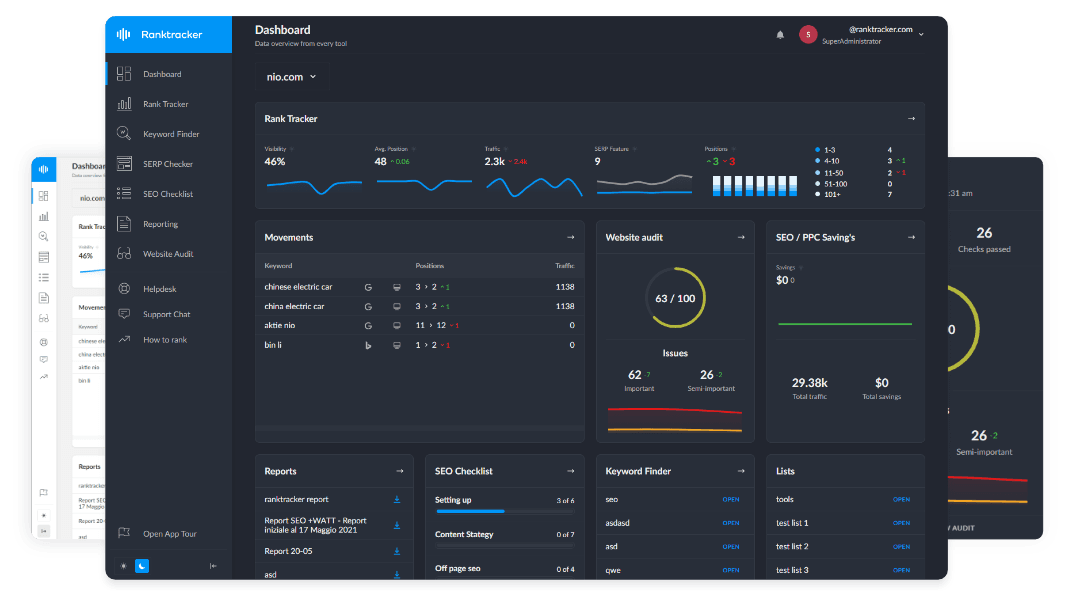Intro
Semantic Ecommerce SEO focuses on optimizing online stores using structured data, entity relationships, and search intent analysis. Instead of relying solely on keywords, semantic SEO helps search engines understand the meaning and context of product pages, improving rankings and user experience.
Why Semantic SEO Matters for Ecommerce:
- Enhances product visibility in search results.
- Improves rankings for long-tail & intent-based queries.
- Boosts conversions by matching user search intent with relevant products.
Key Semantic SEO Strategies for Ecommerce Websites
1. Implement Product Schema Markup
- Helps search engines understand product details & improve rich snippets.
- Example:
{
"@context": "https://schema.org",
"@type": "Product",
"name": "Wireless Noise-Canceling Headphones",
"image": "https://example.com/headphones.jpg",
"description": "High-quality noise-canceling headphones with 40-hour battery life.",
"brand": {
"@type": "Brand",
"name": "TechSound"
},
"offers": {
"@type": "Offer",
"price": "199.99",
"priceCurrency": "USD",
"availability": "https://schema.org/InStock"
}
}
2. Optimize Category Pages with Semantic Keywords
- Use natural language phrases & related entities in titles, descriptions, and headers.
- Example:
- Instead of: "Best running shoes for men"
- Use: "Top-rated men’s running shoes for marathon training & daily workouts"
3. Enhance Internal Linking with Contextual Relevance
- Link related products, categories, and blogs based on semantic relationships.
- Example:
- A "Smartphones" category should link to "Wireless Chargers" and "Phone Cases" for improved topical relevance.
4. Use NLP & AI for Product Descriptions
- Write descriptions optimized for user intent rather than keyword stuffing.
- Example:
<h2>Why Choose Our Wireless Headphones?</h2>
<p>Designed for high-fidelity sound and ultimate comfort, these wireless headphones feature active noise cancellation, making them perfect for travel, work, and gaming.</p>
5. Leverage FAQ Schema for Ecommerce Pages
- Helps answer common customer questions in search results.
- Example:
{
"@context": "https://schema.org",
"@type": "FAQPage",
"mainEntity": [
{
"@type": "Question",
"name": "What is the battery life of these headphones?",
"acceptedAnswer": {
"@type": "Answer",
"text": "These headphones offer up to 40 hours of battery life on a single charge."
}
}
]
}
6. Optimize for Voice Search & Conversational Queries
- Include natural language phrases & question-based content.
- Example:
- "Where can I buy the best noise-canceling headphones for travel?"
7. Improve Image & Video SEO with Semantic Metadata
- Add alt text, structured data, and captions for search engines.
- Example:
<img src="wireless-headphones.jpg" alt="Wireless noise-canceling headphones with 40-hour battery life">
Best Practices for Semantic Ecommerce SEO
✅ 1. Use Entity-Based SEO for Product & Category Pages
- Optimize product names, descriptions, and meta tags with relevant entities.
✅ 2. Focus on E-A-T (Expertise, Authority, Trustworthiness)
- Display customer reviews, brand credibility, and secure payment options.
✅ 3. Optimize for Mobile & Core Web Vitals
- Ensure fast-loading pages, responsive design, and smooth UX.
✅ 4. Implement Semantic Breadcrumbs & Navigation
- Use structured breadcrumbs to improve click paths.
Tools to Optimize Semantic Ecommerce SEO
- Google Search Console – Monitor structured data errors & indexing issues.
- Ranktracker’s Web Audit Tool – Identify SEO gaps in ecommerce sites.
- Ahrefs & SEMrush – Analyze semantic keyword opportunities.
Conclusion: Strengthening Ecommerce SEO with Semantic Strategies
A well-optimized semantic SEO strategy enhances product discoverability, search intent alignment, and ecommerce sales. By focusing on structured data, entity-based optimization, and NLP-driven content, ecommerce businesses can achieve higher rankings and improved conversions.

